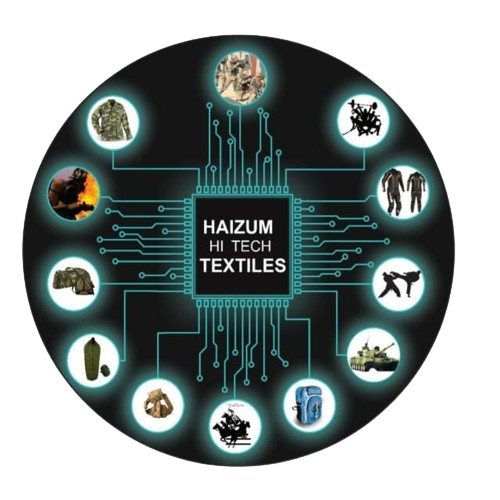

- The processing of a fabric military net with EMI protection, RFID shielding, thermal protection, and digital vest integration involves a multi-faceted approach that combines advanced textile technologies with cutting-edge electronics. This innovative combination aims to provide military personnel with a versatile and high-tech solution for various operational needs. Let’s delve into the key aspects of this sophisticated processing:
- Fabric Selection:
Begin with the selection of specialized fabrics that offer multiple functionalities. The base fabric should provide durability, flexibility, and comfort. Additionally, integrate materials that offer electromagnetic interference (EMI) protection, RFID shielding, and thermal insulation. These fabrics should meet military standards for ruggedness and reliability. - EMI Protection:
Incorporate materials designed to shield against electromagnetic interference. This is crucial for military applications where electronic devices and communication systems need protection from external electromagnetic signals. Conductive fabrics or metal-coated textiles can be integrated into the layers of the fabric military net to create an effective EMI shield.
- RFID Shielding:
Integrate RFID-blocking technology into the fabric to prevent unauthorized access to sensitive information. RFID-blocking materials disrupt radio frequency signals, ensuring the security of embedded RFID chips in military equipment and personnel identification systems. - Thermal Protection:
Employ thermal insulating materials to provide protection against extreme temperatures. Military personnel often operate in diverse environments, and thermal insulation helps regulate body temperature, ensuring comfort and safety in both hot and cold conditions. - Digital Vest Integration:
Incorporate pockets, slots, or panels within the fabric to seamlessly integrate digital components. These may include embedded sensors, communication devices, or power sources for wearable technology. The design should accommodate the placement of digital components without compromising the overall integrity and functionality of the vest.


- Manufacturing and Layering:
Utilize advanced manufacturing techniques to layer the different functionalities seamlessly within the fabric. The layering process should ensure that each protective element works synergistically while maintaining the flexibility and comfort required for military personnel in the field. - Testing and Quality Assurance:
Rigorously test the fabric military net to ensure that it meets or exceeds military standards for EMI protection, RFID shielding, thermal insulation, and digital integration. Conduct tests under various environmental conditions to validate the performance and reliability of the fabric in real-world scenarios. - Continuous Improvement:
Acknowledge that technology evolves, and military requirements may change. Implement a system for continuous improvement, allowing for updates to the fabric’s design and technology integration to stay ahead of emerging threats and enhance overall performance.
The processing of fabric military net with EMI protection, RFID shielding, thermal protection, and digital vest integration represents a harmonious blend of traditional textile manufacturing and cutting-edge technology. The result is a high-performance and adaptive solution that addresses the multifaceted challenges faced by military personnel in the field.
